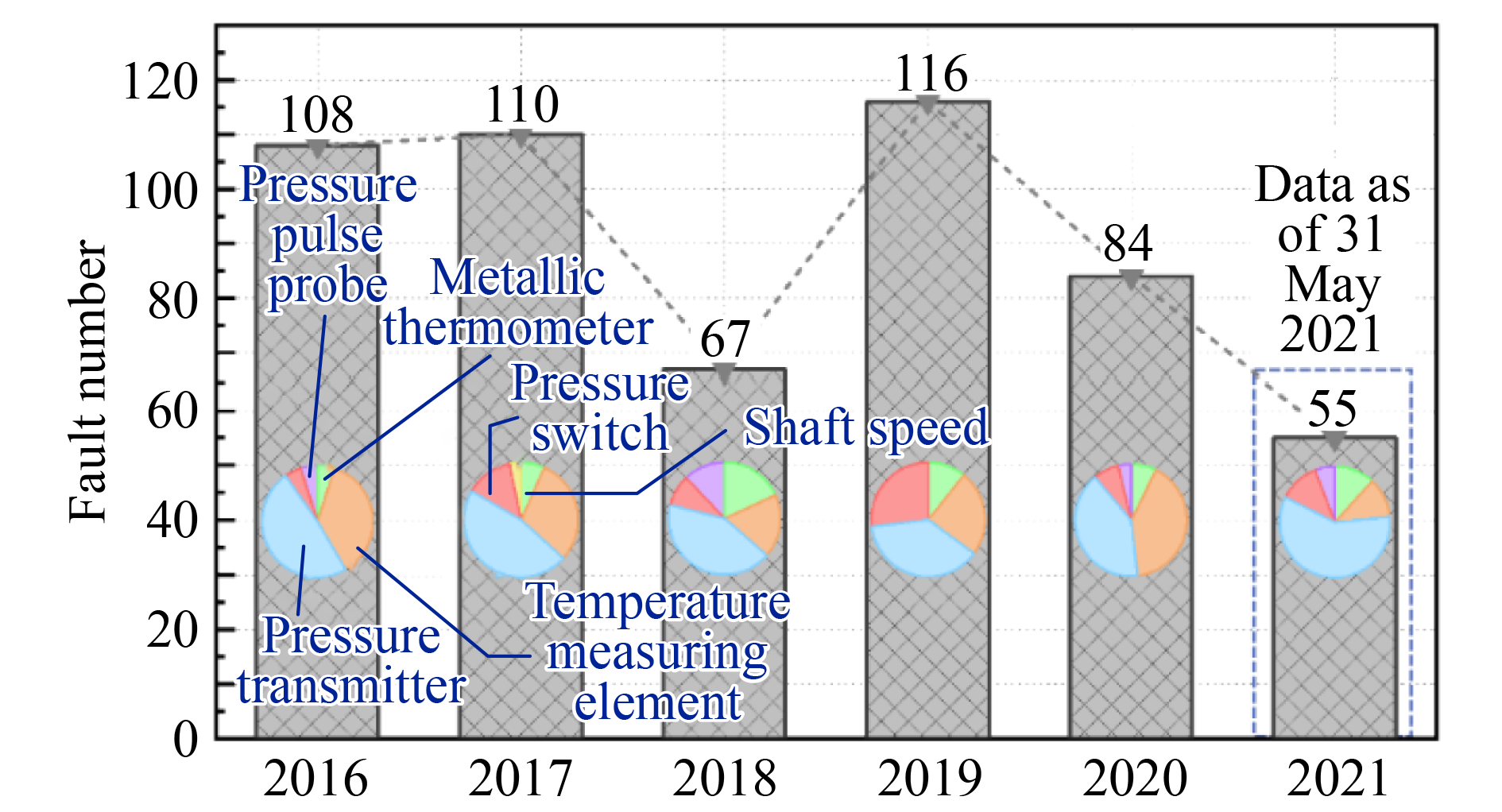1 Introduction
1.1 Motivation
1.2 Related work
1.3 Contributions
2 Problem definition
3 Multi-signal fault detection methods
3.1 Representation learning
3.1.1 Triplet Loss with labels
3.1.2 Sequenced-based Triplet Loss
3.2 Local outlier factor
4 Implement details
4.1 Fault data sources
4.2 Evaluation metrics
4.2.1 Classification evaluation metrics
4.2.2 Clustering evaluation metrics
4.3 Hyperparameters
Tab.1 Experiment parameters |
| Dataset | Window length | Input dimensions | Hidden dimensions | RNN layers | Bidirectional parameter | Output features |
|---|---|---|---|---|---|---|
| NASA | 128 | 21 | 128 | 2 | True | 10 |
| 9F EGTs | 36 | 20 | 100 | 1 | True | 10 |
5 Results and discussion
5.1 Fault detection results
5.1.1 Test on sudden faults, progressive faults, and hybrid faults
Tab.2 Short fault, F1-score of various unary classification algorithms coupling with various feature extractors |
| Unary classifier | CPC | TNC | Triplet Loss | Original data |
|---|---|---|---|---|
| Robust covariance | 0.615 | 0.696 | 0.889 | 0.963 |
| One-Class SVM | 0.421 | 0.421 | 0.085 | 0.548 |
| Isolation Forest | 0.410 | 0.457 | 0.500 | 0.537 |
| LOF | 0.727 | 0.696 | 0.762 | 0.059 |
Tab.3 Step fault, F1-score of various unary classification algorithms coupling with various feature extractors |
| Unary classifier | CPC | TNC | Triplet Loss | Original data |
|---|---|---|---|---|
| Robust covariance | 0.593 | 0.696 | 0.889 | 0.877 |
| One-Class SVM | 0.421 | 0.421 | 0.085 | 0.548 |
| Isolation Forest | 0.410 | 0.457 | 0.500 | 0.537 |
| LOF | 0.727 | 0.696 | 0.762 | 0.076 |
Tab.4 Drift fault, F1-score of various unary classification algorithms coupling with various feature extractors |
| Unary classifier | CPC | TNC | Triplet Loss | Original data |
|---|---|---|---|---|
| Robust covariance | 0.583 | 0.667 | 0.714 | 0.000 |
| One-Class SVM | 0.432 | 0.432 | 0.085 | 0.013 |
| Isolation Forest | 0.421 | 0.471 | 0.516 | 0.073 |
| LOF | 0.727 | 0.727 | 0.800 | 0.244 |
Tab.5 Noise fault, F1-score of various unary classification algorithms coupling with various feature extractors |
| Unary classifier | CPC | TNC | Triplet Loss | Original data |
|---|---|---|---|---|
| Robust covariance | 0.593 | 0.636 | 0.824 | 0.094 |
| One-Class SVM | 0.333 | 0.286 | 0.085 | 0.473 |
| Isolation Forest | 0.368 | 0.457 | 0.452 | 0.468 |
| LOF | 0.727 | 0.696 | 0.700 | 0.319 |
Tab.6 Periodic fault, F1-score of various unary classification algorithms coupling with various feature extractors |
| Unary classifier | CPC | TNC | Triplet Loss | Original data |
|---|---|---|---|---|
| Robust covariance | 0.615 | 0.696 | 0.889 | 0.000 |
| One-Class SVM | 0.378 | 0.378 | 0.085 | 0.489 |
| Isolation Forest | 0.410 | 0.457 | 0.500 | 0.485 |
| LOF | 0.545 | 0.696 | 0.762 | 0.308 |
5.1.2 Performance on recall and false alarm
5.2 Clustering of extracted features
5.3 Computing resources
Tab.7 Comparison of unary classifier computation time |
| Unary classifier | Original time/s | Original CPU memory/GB | After encoded time/s |
|---|---|---|---|
| Robust covariance | 2.99 | 0.31 | 0.0550 |
| One-Class SVM | 0.53 | 0.32 | 0.0010 |
| Isolation Forest | 0.58 | 0.32 | 0.2100 |
| LOF | 2.67 | 0.35 | 0.0036 |
Tab.8 Comparison of feature extractor computation time |
| Feature | CPC | TNC | Triplet Loss |
|---|---|---|---|
| Parameters | 75210 | 75210 | 75210 |
| GPU memory/MB | 2.22 | 2.22 | 2.22 |
| Time/s | 0.025 | 0.021 | 0.025 |




















